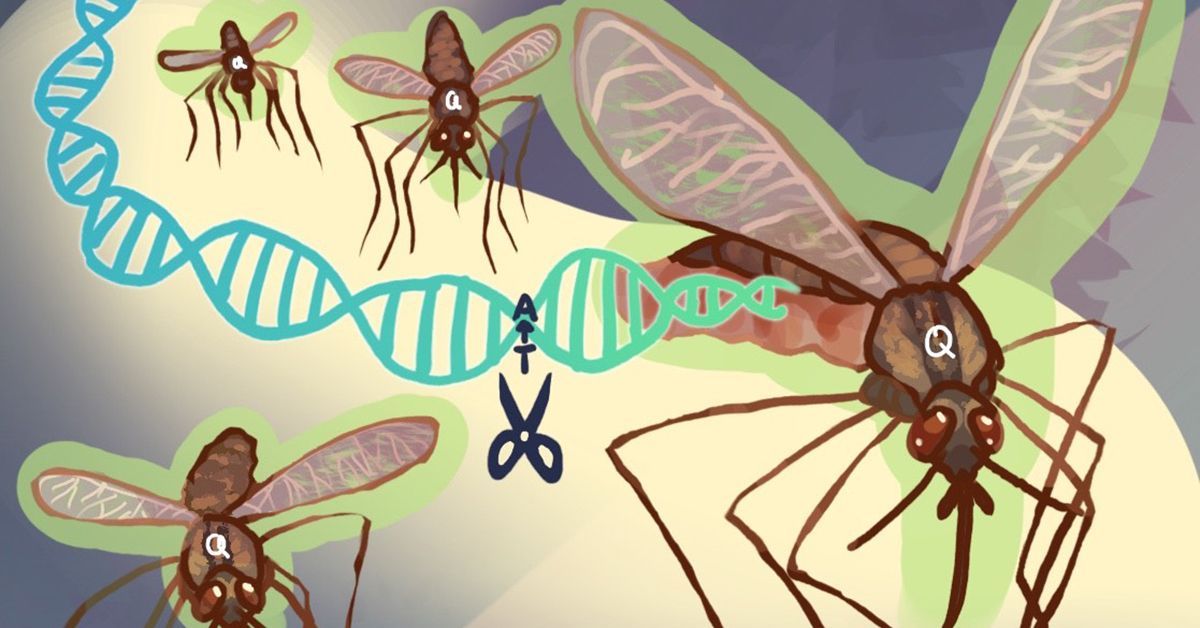
Genetically modified mosquito larvae express fluorescent markers of the FREP1 gene — RFP (pink), GFP (blue) or both (yellow) — to indicate whether they spread or block infection from malarial parasites. Credit: Zhiqian Li, Bier Lab, UC San Diego
“In that prior study, we created a self-eliminating drive that converts a population of fruit flies from being resistant to insecticides back to its native insecticide-susceptible state. Then that genetic cassette just disappears, leaving only a re-wilded insect population,” said Bier. “A similar phantom drive system could convert mosquito populations to carrying the parasite-resistant FREP1Q variant.”
While the researchers demonstrated the effectiveness of the L224-to-Q224 switch, they don’t yet fully grasp why this change works so efficiently. Ongoing research into how the Q224 amino acid blocks the parasite’s infection transit route is underway.
“This breakthrough is the result of seamless teamwork and innovation across institutions,” said Dimopoulos. “Together, we’ve harnessed nature’s own genetic tools to turn mosquitoes into allies against malaria.”
The authors of the study were: Zhiqian Li, Yuemei Dong, Lang You, Rodrigo M. Corder, Jemariz Arzobal, Audrey Yeun, Lei Yang, John M. Marshall, George Dimopoulos and Ethan Bier.
Funding for the research was provided by: the Bill & Melinda Gates Foundation (INV-036579, INV-043645, INV-017683 and INV-078535); the National Institutes of Health (grants R01GM117321, R01GM144608, R01AI162911, R01AI170692, R01AI158615 and R01AI143698); Howard Hughes Medical Institute (grant 90101319); Bloomberg Philanthropies; and Open Philanthropy (grant GV673605686).
Competing interest disclosure: Bier has equity interest in two companies he co-founded: Agragene Inc. and Synbal Inc., which may potentially benefit from the research results.
